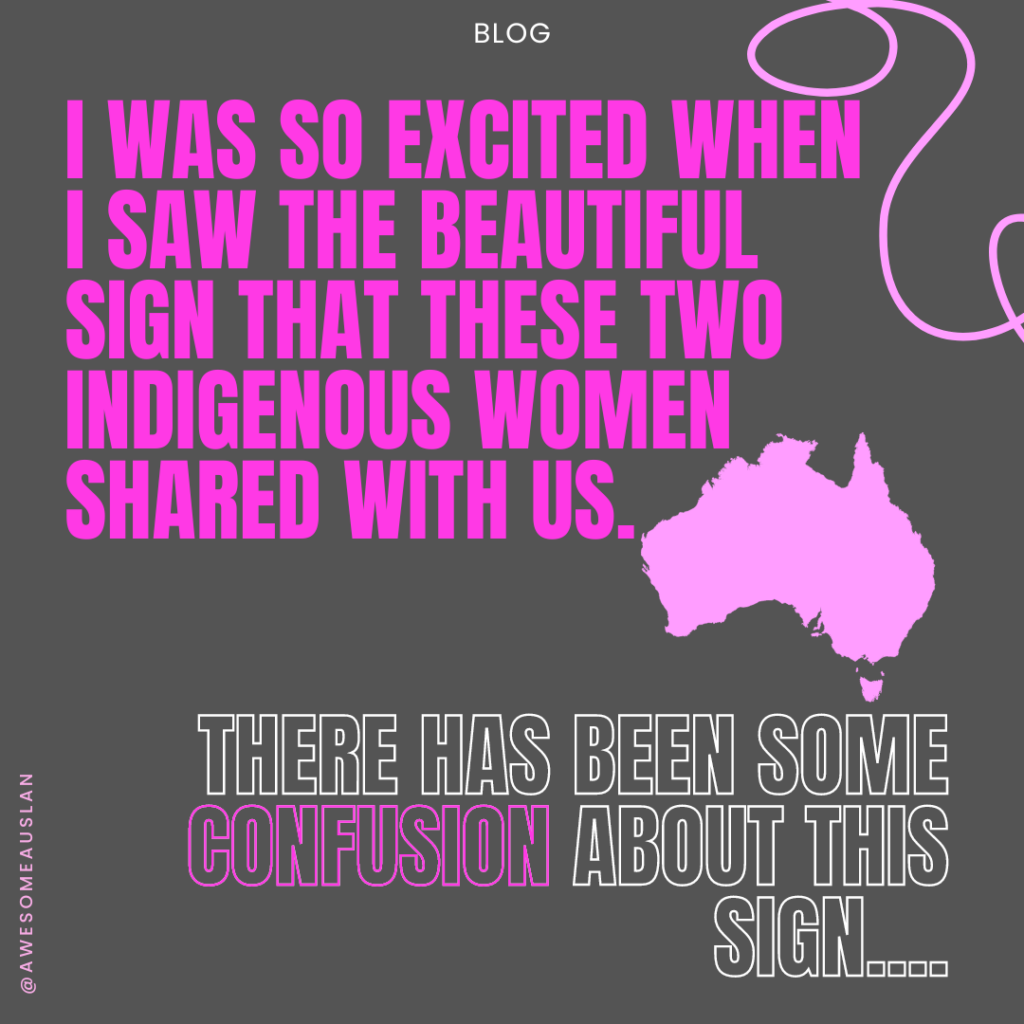I remember some time back when a video was posted by Deaf Aboriginal Services sharing the ‘other’ sign of AUSTRALIA (which I’ll refer to as AUSTRALIA2 throughout this blog). I was so excited when I saw the beautiful sign that these two Indigenous women shared with us.
Samantha Wilson (Muthi Muthi) and Joanna Agius (Narungga) explained that the current sign for AUSTRALIA1 does not match, include, or acknowledge their experience and history. This is due to the theory that the origin of the sign AUSTRALIA1 depicts convicts being picked-up from England and dropped-off in Australia. Indigenous peoples do not have any connection to this sign and the narrative it depicts – this makes sense.
They shared a sign that the Deaf Indigenous community had created and been using since 2017: AUSTRALIA2.
There has been some confusion about this ‘new’ sign for Australia, with some people thinking that it is going to take over or replace the current sign.
This is incorrect and not the case.
I will explain here the same way I explain to my students whenever this topic comes up.
The AUSTRALIA2 sign depicts the land with the subdominant hand (the thumb looks like Queensland), the dominant hand moves to shows the water surrounding it and the areas where most people live (the coast) – the sign is anchored by the depiction of a rock in the centre of the land – Uluru.
They created and shared this sign because in events such as NAIDOC week, Acknowledgement of Country, or other Indigenous events, AUSTRALIA1 is not appropriate. These are the situations when AUSTRALIA2 is encouraged to be used.
We, for example, would not use AUSTRALIA2 when signing the national anthem as this song is also not reflective of the Indigenous experience – even with the change of lyrics from ‘We are young and free’ to ‘We are one and free’. For now, continue to use AUSTRALIA1 for this song and continue to use AUSTRALIA1 for all situations referring to the nation of Australia as per usual.
At no point was there mention of AUSTRALIA2 replacing the current sign AUSTRALIA1, but merely to be aware of and sensitive in circumstances as to which sign is most applicable, respectful or appropriate to the situation.
I see no hardship in simply adapting to this preference and adopting the use of this new-to-us sign where applicable.
I, for one, am grateful they have shared it with us and will try to be respectful and use it appropriately where possible.
This is my understanding of what was explained to me.
As always, it is good practice to clarify for yourself when you should be in a position to meet any Deaf Indigenous/Aboriginal people.
Hope you found this handy and keep up your Awesome Auslan!
Disclaimer: This information is entirely subjective and based on my personal experience, interpretation and understanding of the subject matter.

As a Deaf person who has used, loved, and continued to learn Auslan throughout my life, it was when I started studying the Diploma of Auslan (Deaf cohort 2018) that I was awestruck by how beautifully complex Auslan is.

